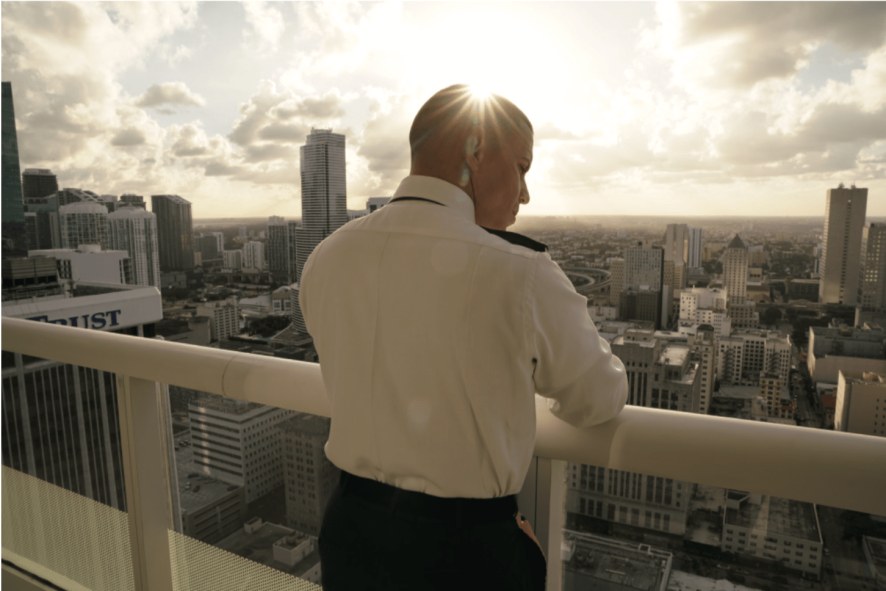Battlelands, 2018
two channel video installation
59'00"
Edition of 5 plus 2 artist's proofs
"For the last ten years in Japan, I have been working on questions like how the destruction of modern warfare affect people’ s memories, and what is the personal “choice” for the soldiers, who are destined to follow the order. When I was asked to make a work for Perez Art Museum in Miami, I decided to work around these questions in the US context with the veterans from the wars in Iraq and Afghanistan.
I asked veterans to wear GoPro camera (wearable camera) around their heads, and asked to describe the scenes of their everyday lives (their homes, their towns, and so on). Then in the same spots, I asked them to close their eyes, and asked to describe the most stressful moments in Iraq or Afghanistan. With editing, I mixed these two kinds of scenes seamlessly so that scenes of their everyday lives are suddenly transformed into a stressful nightmare of war zones.
This project allowed me for the first time to travel to several cities across America. I came away feeling that the United States is still very much a dreamland. The project took me to Miami, San Francisco, San Diego, and Oakland. Each city has scenic areas where you can encounter beautiful bodies of water, open skies, and sublime sunsets. The houses in these cities are large, streets are wide, cars are huge, portions of food are vast, and rich people are really rich. I was left with a sense of overwhelming wealth in every sense. But at the same time, of course, I saw poverty in each context, on the peripheries of each city. I witnessed many homeless people walking around downtown areas, run-down areas of the suburbs, and low-income neighborhoods. Just as we in Japan have been taught and have imagined since we were kids, America appeared under my exoticizing gaze as truly founded on the notion of the American Dream, this “dream project” that professes that everyone has an equal chance to succeed in life. But the gigantic gap between the successes and failures of these dreams was also very clear. The journey exposed me to both the bright side of such a big dream and to many of the nightmares behind it.
As a Japanese person, I tell myself that I am not a foreigner to this dream project or uninvolved or not implied within it. I also take part in it and the systematic violence involved in sustaining it. The fantasy of Japan’ s peace, prosperity, comfort, and protection is only possible through the United State’ s pursuit of freedom and fight for democracy. In Japan we pretend that we are an innocent and peace-loving people, but our fantasy is sustained by the American youths making the “heroic” choice to risk their lives for democracy and freedom. Perhaps the goal of this project has been to help us recognize that we are all taking part in this big dream project, and to recognize that the violence of war does not only exist in Iraq and Afghanistan nor in the memories of veterans, but within our comfortable daily lives, our culture, our economy, our desires, our instincts, our beautiful souls, and our good will."
Meiro Koizumi

